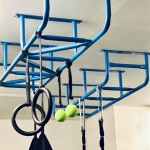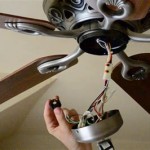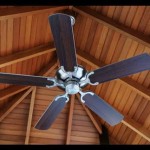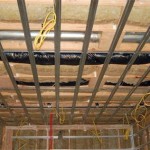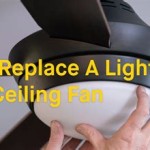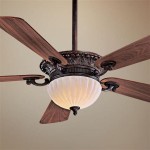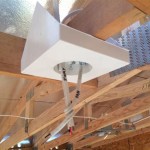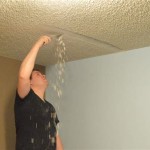Ceiling Fans with Separate Light and Fan Switches: Understanding the Benefits and Functionality
Ceiling fans offer a multifaceted solution for improving indoor comfort, providing both air circulation and illumination. Among the various types of ceiling fans available, those featuring separate switches for the light and fan functions are particularly popular due to their enhanced control and energy-saving potential. This article will delve into the benefits, functionality, wiring considerations, and troubleshooting aspects of ceiling fans equipped with separate light and fan switches.
The ability to independently control the light and fan allows for a highly customizable environment. Users can opt for air circulation without overhead lighting or vice versa, depending on the ambient lighting conditions and desired climate. This flexibility makes these fans suitable for a wide range of rooms and personal preferences.
Enhanced Control and Convenience
Ceiling fans with separate switches offer superior control compared to models where the light and fan are linked to a single switch. The independent control provides immediate options for creating the desired ambiance. Imagine a scenario where ambient light is sufficient, but mild air circulation is desired; in such cases, the fan can be activated while the light remains off. Conversely, the light can be used independently when additional illumination is needed without necessarily requiring air movement.
This separation of functions is particularly advantageous in bedrooms. During sleep, some individuals prefer complete darkness, while others require a dim light source. With separate switches, one can use the fan for cooling without the light disturbing sleep. Similarly, the light can be used for reading or other activities without the fan creating unwanted drafts.
Convenience extends beyond personal preference. In larger rooms, the ability to independently control the light and fan can be useful for specific tasks. For instance, increased light output might be desired during cleaning or home improvement projects, while the fan can be adjusted to manage dust and debris in the air.
Energy Efficiency and Cost Savings
One of the most significant advantages of ceiling fans with separate switches lies in their potential for energy conservation. Users can avoid unnecessary energy consumption by operating only the function that is presently needed. Running the fan without the light, or vice versa, significantly reduces the overall power draw, leading to lower electricity bills.
Incandescent or halogen bulbs, commonly used in older ceiling fan models, consume substantial amounts of energy and generate heat. By using the fan independently when only circulation is needed, users can avoid this unnecessary heat generation, which can be particularly beneficial during warmer months. Conversely, modern LED bulbs are far more energy-efficient and generate less heat, making them a more sustainable option when the light is needed.
The cumulative effect of these small energy savings can be surprisingly substantial over time. In households with multiple ceiling fans, the annual cost difference between operating fans with separate switches versus integrated controls can be significant. Furthermore, reduced energy consumption contributes to a smaller carbon footprint, aligning with environmentally conscious lifestyles.
The ability to control the light separately also extends the lifespan of the lighting components. By reducing the hours of operation for the light fixture, the bulbs or LED units will last longer, reducing replacement frequency and associated costs. This leads to further cost savings and environmental benefits by reducing waste.
Wiring and Installation Considerations
The installation of a ceiling fan with separate switches typically involves a slightly more complex wiring configuration compared to a standard ceiling fan with a single switch. In most cases, a three-wire system (plus a ground wire) is required, with one wire controlling the fan, one controlling the light, and one serving as the neutral wire. If the existing wiring only accommodates a two-wire system, an electrician may need to run additional wiring to enable independent control.
Safety is paramount during any electrical installation. It is crucial to disconnect the power supply at the breaker box before commencing any wiring work. If unfamiliar with electrical wiring, consulting a qualified electrician is strongly recommended to ensure a safe and compliant installation. Improper wiring can lead to electrical hazards, including short circuits and fires.
Ceiling fans typically come with detailed wiring diagrams that illustrate the correct connection points for the fan motor, light fixture, and wall switches. Carefully following these diagrams is essential for ensuring proper functionality. Often, the fan will include a receiver unit that sits within the fan's canopy. This receiver interprets signals from a remote control or wall-mounted control system to operate the fan and light independently.
When selecting wall switches, it’s important to choose switches that are compatible with the ceiling fan's voltage and amperage requirements. Standard toggle switches or dimmer switches can be used for the light fixture, while a fan speed control switch is typically used for the fan motor. Digital fan speed controls and remote control systems are increasingly prevalent, providing even greater flexibility and convenience.
Troubleshooting Common Issues
Even with proper installation, issues can occasionally arise with ceiling fans featuring separate switches. Common problems include the fan motor not operating, the light not working, or both functions failing simultaneously. Systematic troubleshooting can often resolve these issues without the need for professional assistance.
If the fan motor is not working, first verify that the breaker is not tripped. Next, check the wiring connections within the fan's canopy and at the wall switch. Loose or disconnected wires are a common cause of malfunctions. The fan motor itself may also be faulty and require replacement. To test the motor, consult the manufacturer’s instructions or seek guidance from a qualified electrician.
If the light is not working, begin by replacing the bulb or LED unit. If the new bulb does not illuminate, check the wiring connections between the light fixture and the fan's wiring harness. A faulty light socket or a defective ballast (in the case of fluorescent lights) may also be the cause. Similar to the fan motor, testing the light fixture requires careful attention to safety and may warrant consultation with an electrician.
If both the fan and light are not working, the problem likely lies with the main power supply to the fan or the wiring connections in the ceiling electrical box. Inspect the breaker and all wiring connections for any signs of damage or looseness. In some cases, a faulty receiver unit within the fan's canopy may also be responsible for the failure of both functions. Replacing the receiver unit might be necessary in such scenarios.
When troubleshooting, remember to always disconnect the power supply before working on any electrical components. If unsure about any aspect of the troubleshooting process, it is always best to consult with a qualified electrician to avoid potential hazards. Regularly checking the connections and cleaning the fan can also help prevent many common issues.
In summation, ceiling fans equipped with separate light and fan switches present a versatile and energy-efficient solution for enhancing indoor comfort. Their increased control, potential for energy savings, and flexibility make them a popular choice for homes and offices alike. While installation might require more complex wiring than standard ceiling fans, the benefits of independent control often outweigh the additional effort. Regular maintenance and prompt troubleshooting can ensure years of reliable operation.

Wiring A Ceiling Fan And Light With Diagrams Ptr

How To Wire A Ceiling Fan For Separate Control Fo The And Light

Wiring A Ceiling Fan And Light With Diagrams Ptr

Ceiling Fan Wiring Diagram Two Switches

Wiring A Ceiling Fan And Light With Diagrams Ptr

How To Wire A Fan With Separate Light Switch

How To Install A Ceiling Fan Two Wall Switches What Bb Built

Ceiling Fan Wiring Diagram Power Into Light Dual Switch

How To Wire A Ceiling Fan Control Using Dimmer Switch
How Should I Connect The Wiring For Fans And Lights To Separate Control Switches Quora

